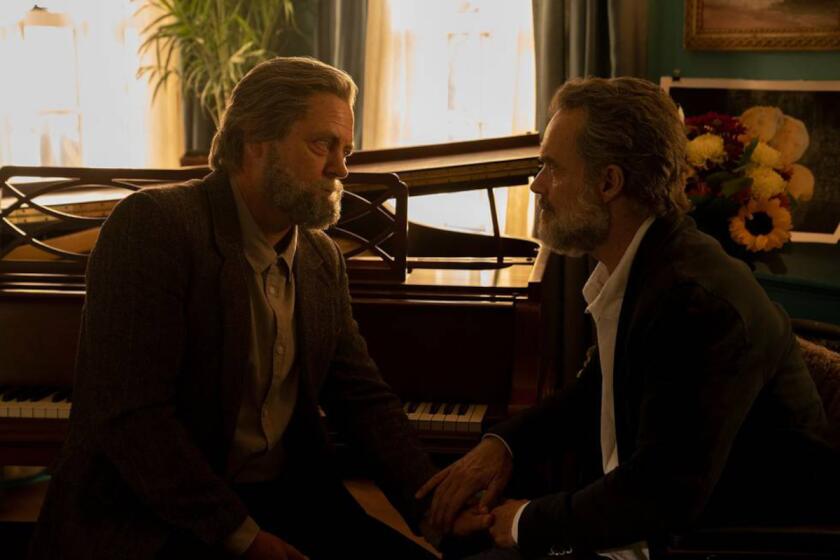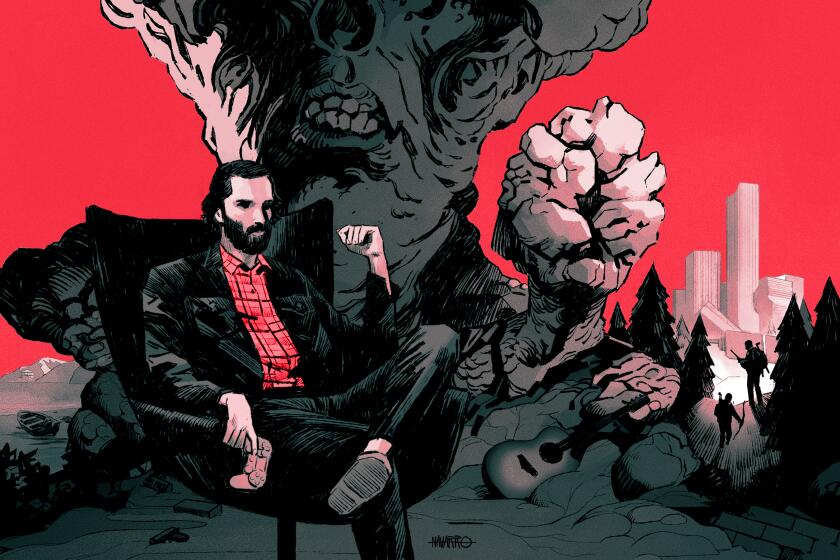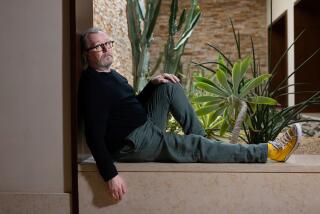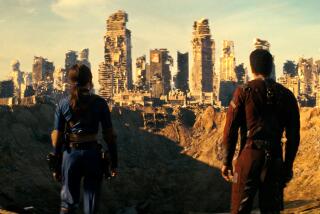How ‘The Last of Us’ created Jackson, a ‘miracle’ settlement of the Old West
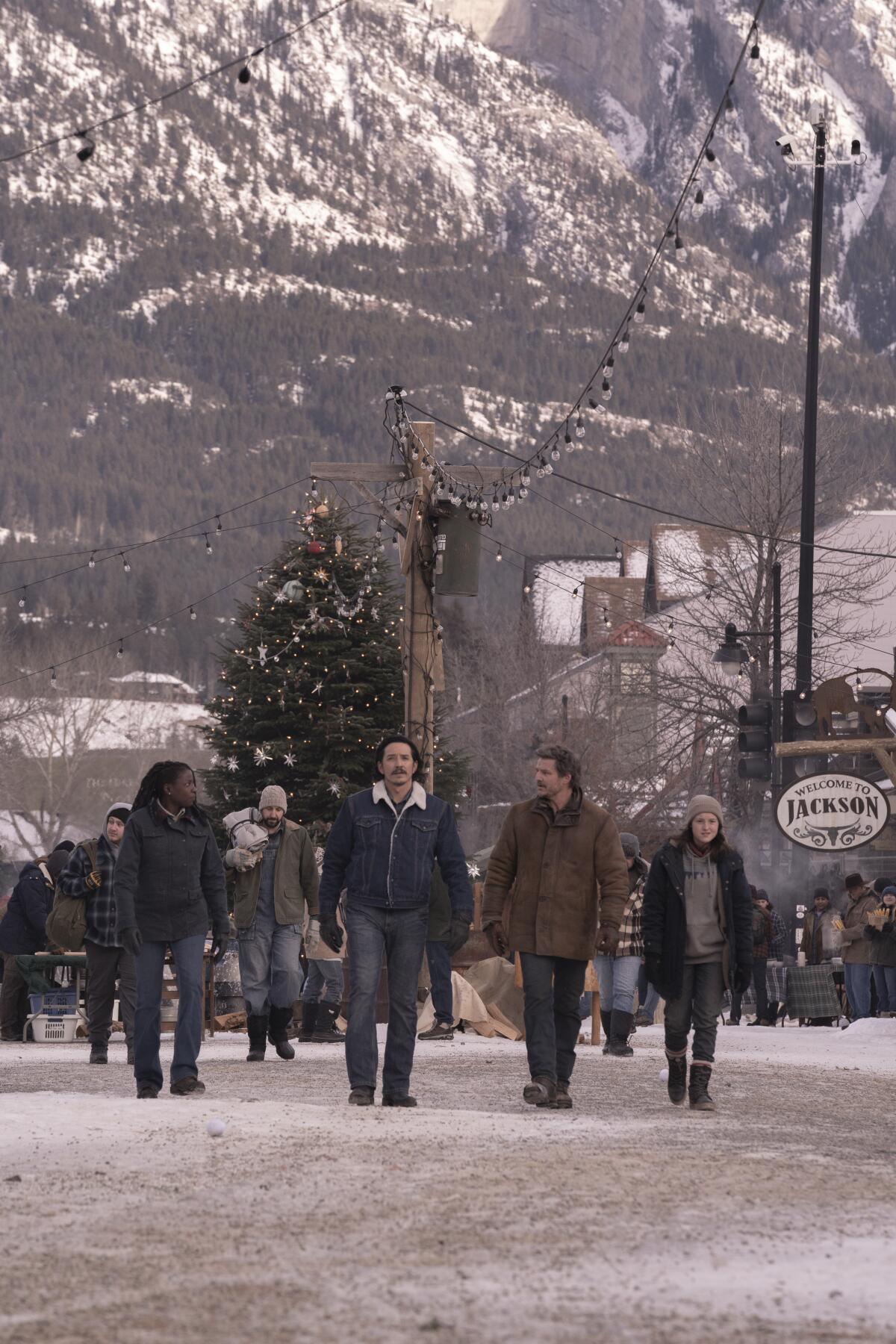
- Share via
The following contains spoilers from the sixth episode of “The Last of Us.”
“I’m just looking for my brother.”
Joel (Pedro Pascal) utters some version of this sentence in nearly every aired episode of “The Last of Us.” But in the sixth installment of the HBO series, the sentiment is the thing that saves him. The armed group surrounding him not only lower their guns but bring him back to their home: Jackson.
This scene might puzzle players of the original video game, as its Jackson locale, built next to a hydroelectric dam, is a concrete structure that’s lined with overgrown plants and industrial military equipment. However, the TV show’s version of Jackson resembles the version of the settlement seen in the second game: a bustling town reminiscent of the Old West.
“Up until this point, we’ve had a lot of concrete, and there was a desire to be out in the Midwest, with all the natural beauty and the fresh air that you can find in the middle of America,” says production designer John Paino of the decision. Since the real-life Jackson Hole, Wyo., “has become a tourist town,” the Jackson in the series was constructed in Canmore, a small town in Alberta, Canada. “The buildings there have a real rustic feel, and this beautiful view of the Rocky Mountains at the end of its main street,” says Paino.
In Sunday’s episode, the HBO series introduces two characters from the game, Bill and Frank — and changes their story completely. Here’s why.
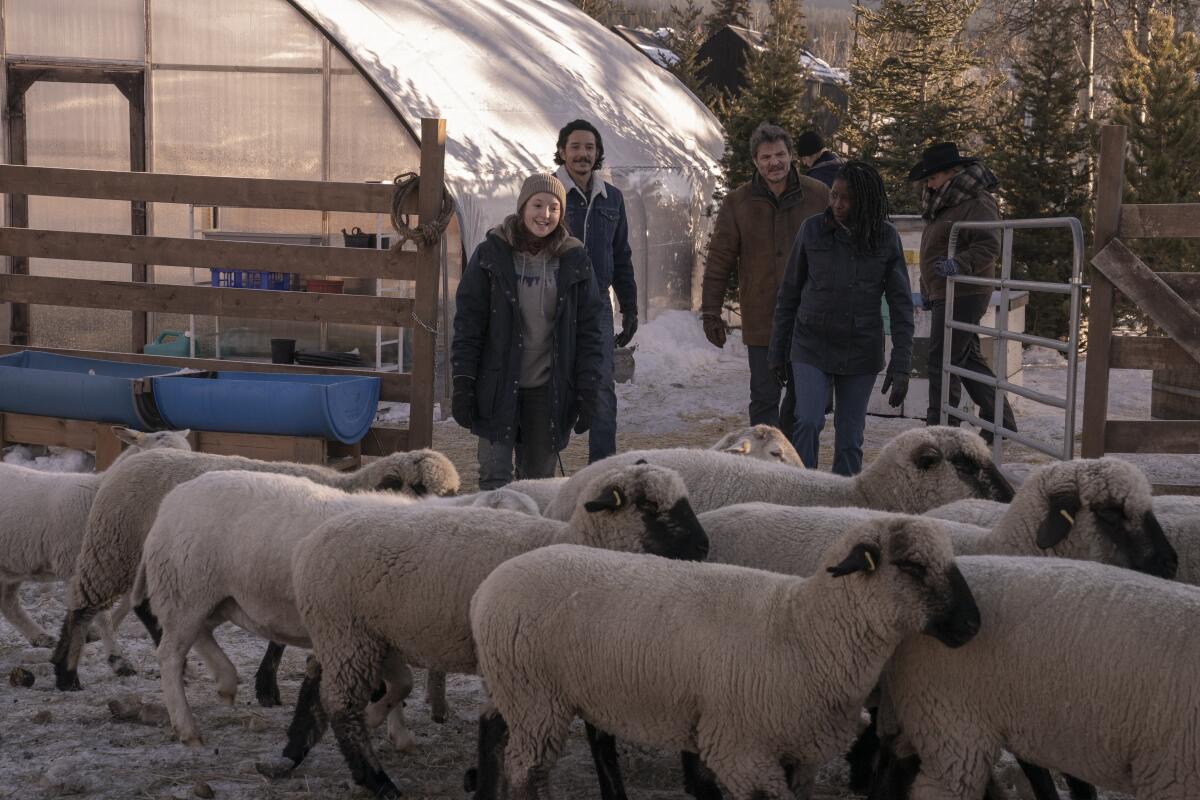
That picturesque vista is on full display when Joel and Ellie (Bella Ramsey) enter Jackson for the first time. Men working together to cut lumber, children playing outside a daycare center, families walking around together and enjoying the day: These are people who aren’t just surviving but thriving and managing to do so peacefully.
“After the complete collapse of civilization, and all the horror of quarantine zones and destroyed major cities, for Joel and Ellie to see a functioning society is very shocking for them,” says director Jasmila Žbanić, who, as a survivor of the Bosnian war, wanted to get this episode’s emotional tone just right. “They’re confronted with things that Ellie has never experienced, and everything is a miracle for her.”
Joel and Ellie are then told that Jackson was established seven years ago, and now houses 300 people including children. With everyone sharing communal duties, the town not only has electricity, sewers and running water but also has a school, a house of worship, a medical clinic, a movie theater (screening the 1977 movie “The Goodbye Girl”) and a jail (though that doesn’t get used much). There’s even a large Christmas tree, lit and decorated in the town square.
A close look at these scenes unveils strategic set dressings. “The barbecue place where Joel and Ellie have their first meal, it’s decorated with banners that might have been made by the children of the community,” says Paino. “And things that are repaired around town, they’re not just put together like in the QZ but they’re built to last, because the people there aren’t cannibalizing each other and actually look out for each other.
“We’re playing a bit into the mythos of Americans pulling themselves up by the bootstraps, but we wanted it to be clear and even refreshing that Jackson is a long-term settlement,” Paino continues. “There’s hope there; they’re proud of what they’ve done.”
We trace the history of Naughty Dog’s pop culture phenomenon, from the video game’s 2013 debut to its adaptation as an HBO series 10 years later.
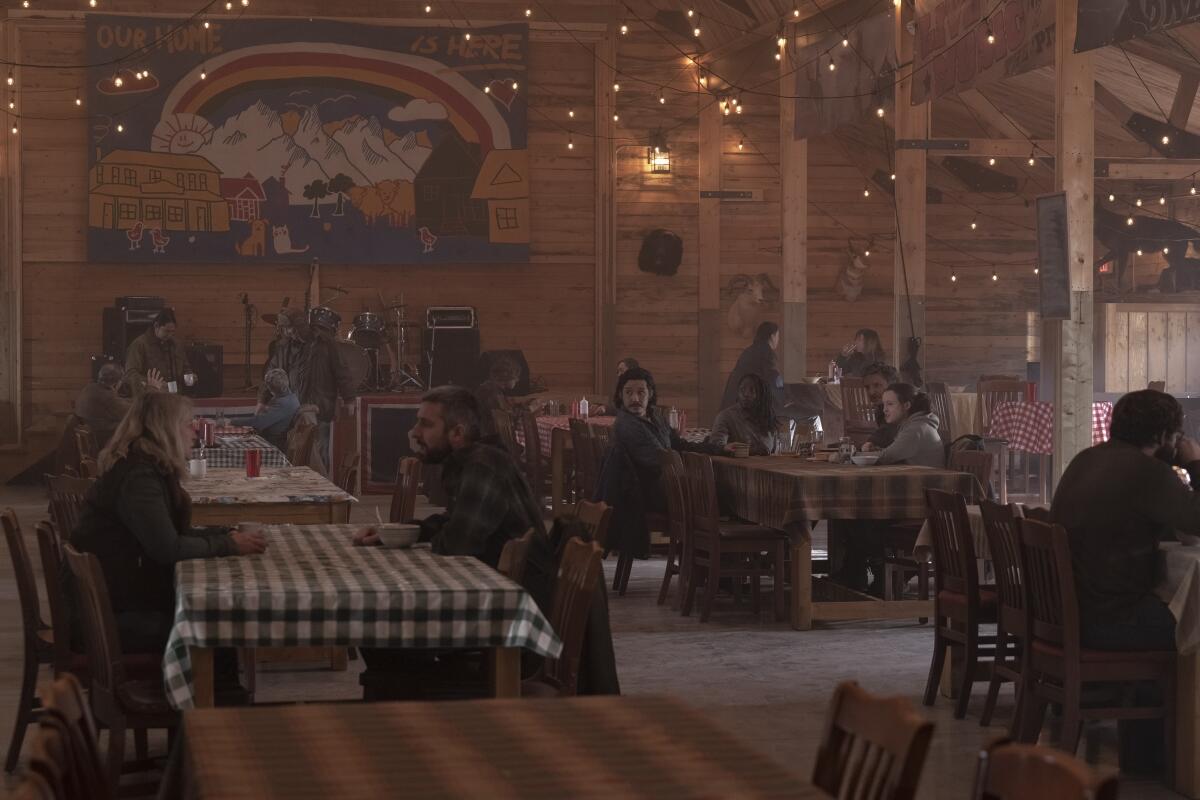
“We’re playing a bit into the mythos of Americans pulling themselves up by the bootstraps,” says “The Last of Us” production designer John Paino.
With weeks of planning and all the necessary local approvals, the series transformed Canmore into its Americana sanctuary without disturbing its daily life there too much. Paino’s team built stables and greenhouses atop empty parking lots, added new façades to existing buildings and put in sidewalks and railroad ties. And though that 30-foot-tall log wall wasn’t built to actually surround the entire town — only up to 60 feet on either side of its opening section — it was erected on a major street in Canmore and had to be opened to allow for real-life traffic.
Jackson is the setting for some key discoveries: Joel reunites with his brother Tommy (Gabriel Luna) and meets Tommy’s wife, Maria (Rutina Wesley), Ellie learns about Joel’s late daughter Sarah (Nico Parker) and, amid newfound amounts of fear and doubt, Joel reaffirms his commitment to deliver Ellie to the Fireflies.
“This script gave the actors the space to show all their entire palettes of emotions, to be sad and scared and loving and laughing,” says Žbanić of the episode, written by series co-creator Craig Mazin. “For our two main characters, Jackson reveals these huge emotions of how to go on. They enter as Joel and Ellie, and they exit as completely different people. They are changed by this society.”
Of course, once the episode’s filming wrapped, Paino’s team returned Canmore to its residents. (Parts of the log wall was “milled down for a set in the next episode, but I hate to say it, a lot of it ended up in the chipper.”) He wouldn’t be surprised if the Alberta town becomes a hot spot for “Last of Us” fans, the way “the town where they filmed ‘The Walking Dead’ is like Dollywood now,” he says with a laugh. “It’s a really beautiful area, and there’s great skiing and hot springs up there, so I’m for it.”
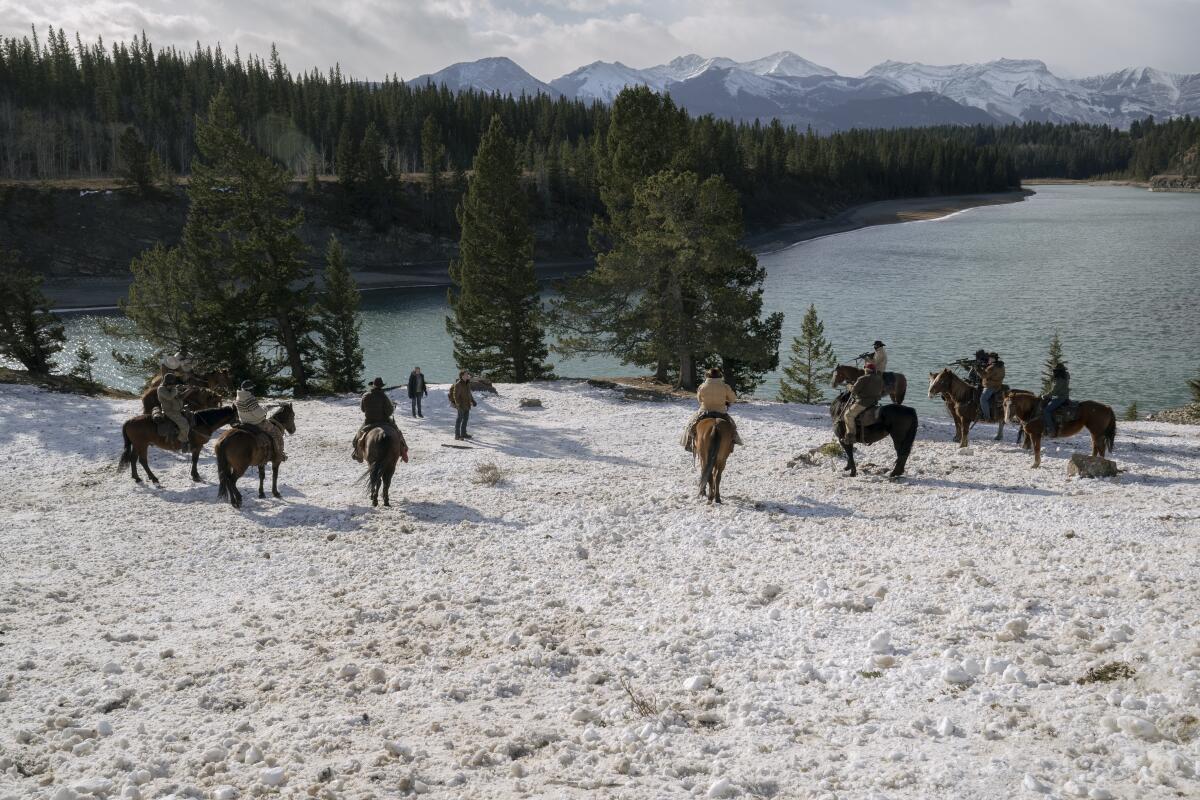
Times staff writer Alexandra Del Rosario contributed to this report.
‘The Last of Us’
Where: HBO
When: Sunday 9 p.m. (Episode 106 repeats 10 p.m. Monday)
Rating: TV-MA (may be unsuitable for children under the age of 17)
Streaming: HBO Max
More to Read
The complete guide to home viewing
Get Screen Gab for everything about the TV shows and streaming movies everyone’s talking about.
You may occasionally receive promotional content from the Los Angeles Times.
